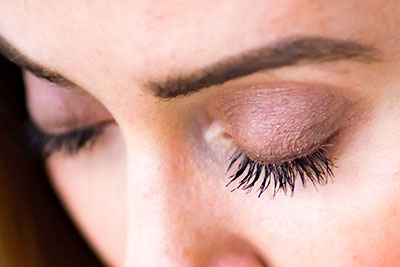Eyelid Surgery
Eyelid Surgery is a large part of our practice, encompassing functional, aesthetic and tumour related surgery.
Details on the most common procedures including Blepharoplasty, Eyelid Malposition, and Ptosis can be found below.

Blepharoplasty -
Excess tissue of the upper lids can affect peripheral vision or lead to a sensation of heaviness of the upper lids leading to tired feeling particularly late in the day.
The excess tissue is often eyelid skin compounded by weakening of the structures of the eyelid and advancement of orbital fat into the upper lid.
A thorough understanding of eyelid structure and function means an ophthalmologist with a special interest in oculoplastic surgery can address each contributory factor required for optimal functional and aesthetic outcomes.
Correction involves surgical removal of skin of an appropriate site and contour, removal or repositioning of eyelid and orbital fat as well as reformation of the skin crease to give a natural and youthful appearance to the upper lid whilst removing tissue affecting vision and eyelash irritation.
Bulky upper lids can be compounded by descent of the lateral eyebrow and drooping of the upper lid causing temporal hooding. These factors can be addressed in the same surgery.
Eyelid Malposition -
Both horizontal laxity of the eyelid combined with weakening of muscles that stabalise the eyelid margin contribute to Ectropion or Entropion.
It is critical to address both when repairing this problem. Other factors such as scarring of skin or conjunctiva can also contribute to eyelid malposition and will also need to be corrected.
Ectropion - The eyelid turns outward.
This generally causes symptoms such as watering or irritation. At times inflammation of the exposed conjunctiva can lead to gritty sensation, ulceration, mucous discharge and in worst case exposure of the cornea with corneal ulceration, scarring and visual comprimise.
Entropion - Inturning of the eyelid.
This is often very symptomatic with ocular irritation which may be intermittent at first but often becomes permanent. It is critical to correct this condition as corneal ulceration can easily lead to severe sight threatening consequences.
Ptosis, 'Drooping Eyelids' -
Drooping of the upper eyelid may be congenital or acquired and maybe uni- or bilateral. This can lead to impairment of peripheral (particularly superior) field of vision or be of cosmetic concern.
As well, patients have difficulty reading, especially at night, and may complain of a brow ache toward the end of the day due to compensatory overaction from the forehead muscles keeping the eye open.
Congenital: Children may be born with a 'droopy' eyelid.
This is often only a cosmetic concern but in a minority the lid can contribute to amblyopia (a weak eye). Your doctor may attempt to treat this initially with patching or drops to penalise the opposite eye if the droop is only mild however if severe, this may need to be corrected at an early age to prevent long lasting poor vision from visual deprivation. The droopy lid is otherwise generally more of a cosmetic concern and although can be corrected at any age, is often reserved until prior to school.
Congenital ptosis can be repaired by a number of mechanisms depending on the age and severity. The two main methods are either shortening of the muscle that lifts the eyelid (levator muscle) or a frontalis sling whereby the lid is connected to the brow via a sling and the eyebrow is used as an accessory to lift the eyelid.
Acquired: This generally is related to age, trauma or prolonged contact lens wear.
There is a dehiscence of the attachment of the levator muscle (muscle that lifts the eyelid) to the eyelid. This is often associated with multiple eyelid creases and excess upper lid skin. Treatment involves shortening the levator muscle and reattaching it to the lid in the appropriate position.

